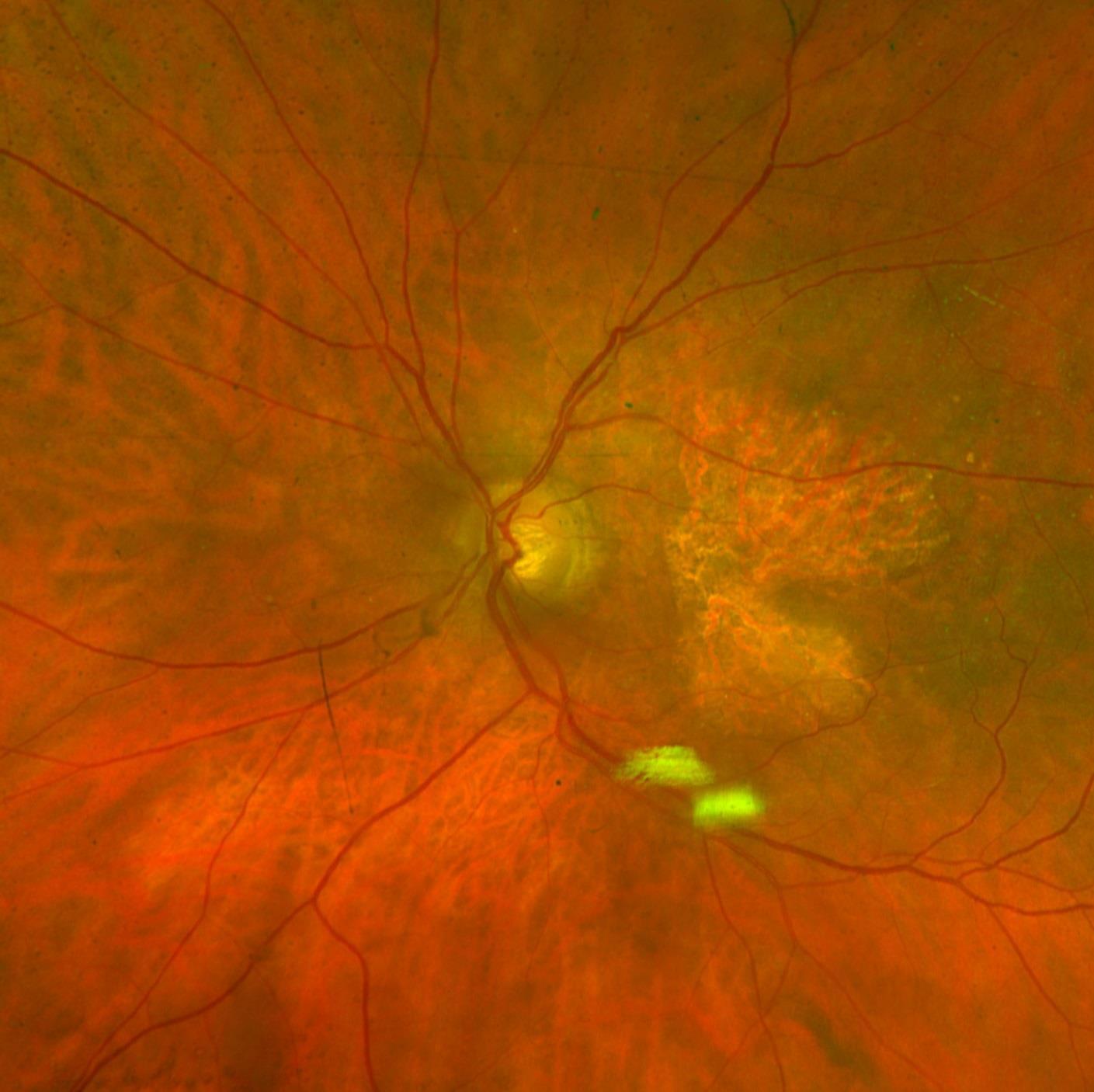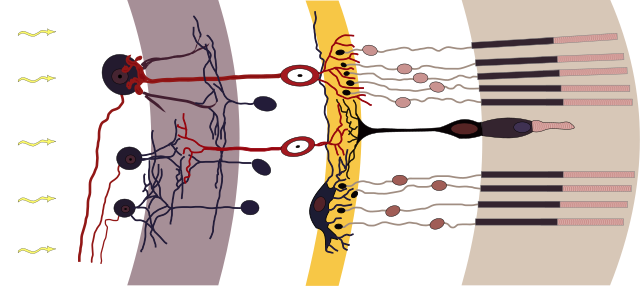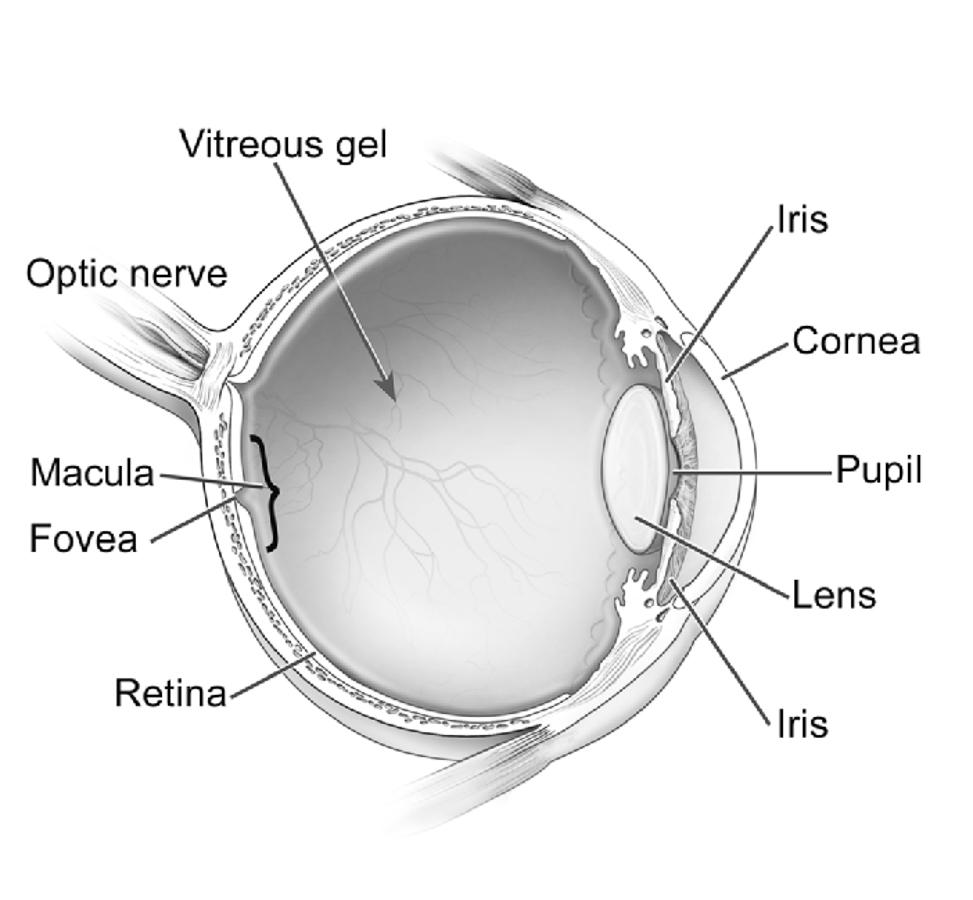Izervay
also known as Avacincaptad Pegol
Last updated August 21, 2025
Medical information on this page is for educational purposes only and is not a substitute for professional medical advice, diagnosis or treatment.
See our Terms & Conditions and Consent for Telemedicine for details.




Overview
Izervay (avacincaptad pegol) is an eye injection used to treat geographic atrophy (GA), an advanced form of dry age-related macular degeneration (AMD). It does not restore lost vision, but it can slow how fast GA grows. Izervay is given by a retina specialist as a small injection into the eye (an intravitreal injection).
Izervay is FDA-approved for GA secondary to AMD. The usual dose is 2 mg (0.1 mL of a 20 mg/mL solution) given once a month. Your eye doctor decides if one or both eyes need treatment. 1 GA slowly damages cells in the center of the retina (the macula), leading to blind spots and trouble reading or recognizing faces over time. Regular eye exams help find changes early. 2
How the Procedure Works & Options
How it works: Izervay blocks complement protein C5, part of the body’s immune system that can over-activate in AMD. By reducing C5 activity, the medicine aims to slow the chain reactions that harm retinal cells. 3 The injection visit is usually short. Your eye is numbed, cleaned, and held open gently. A very small needle places the medicine into the vitreous (the gel in the back of the eye). Most people feel pressure more than pain, and the injection takes seconds. 4
Schedule and choices: Izervay is typically given once a month. Your doctor may adjust follow-up plans based on how your GA looks and how you feel. Other parts of care may include low-vision tools and, in some cases, discussing other GA medicines approved by the FDA.
Who Is a Candidate?
You may be a candidate if you have geographic atrophy caused by AMD. The medicine is not approved for GA from other causes. Your retina specialist will review your eye images, vision, and medical history to see if Izervay fits your needs and goals. 5 AMD is more common with age, and many people with GA are older adults; regular monitoring helps track changes.
Izervay should not be given if you have an active eye infection or active inflammation inside the eye. Your doctor will also watch for signs of wet AMD (abnormal blood vessel growth), which can occur in some patients on treatment and needs separate care. If you can attend regular visits and want to slow GA growth, you may benefit from discussing Izervay. 6
Enter your details below to check your suitability for this treatment
Suitability Level
Recommendation
Cost and Price
Total cost usually includes: the drug itself, the injection procedure by a retina specialist, the clinic visit, and any imaging tests done that day. Many patients use medical insurance, and coverage varies by plan. Ask your clinic to provide a detailed estimate and to check benefits ahead of time. The injection is an in-office procedure done by trained specialists. 7
Izervay comes as a single-dose vial (20 mg/mL) designed to deliver one 0.1 mL dose (2 mg). Each carton includes the vial, a filter needle, and a 1 mL syringe; these are used for only one eye, and a new sterile set is used for the other eye if needed. Knowing this helps explain why charges include both drug and procedure items. 8
Benefits and Limitations
What Izervay can do: In a large clinical trial (GATHER2), monthly avacincaptad pegol slowed GA growth compared with sham injections at 12 months. Slowing the spread of atrophy aims to preserve more healthy retina for longer. 9 Experts note that GA trials commonly use anatomical endpoints (lesion size). These data help guide care while research continues to link anatomy changes with day-to-day vision outcomes. 10
What to keep in mind: Izervay does not cure GA or bring back lost vision. It requires frequent visits and injections. Some patients may develop wet AMD and need additional anti-VEGF treatment; your doctor will monitor for this. Side effects can include eye irritation, a transient rise in eye pressure, infection (endophthalmitis), or retinal detachment—though serious events are uncommon when proper sterile technique is used.
Recovery and Long-Term Care
Right after the injection, your vision may be blurry and the eye may feel scratchy or watery for a day. Artificial tears can help. Do not rub the eye. Call your doctor right away for any strong pain, worsening redness, light sensitivity, or sudden vision drop—these can be signs of infection or other urgent problems. 11
Expect regular monthly visits at first. Your retina team will check your vision, eye pressure, and imaging to track GA and watch for wet AMD. Because injections carry small risks each time, clinics follow strict sterile steps to protect you. Your plan may include low-vision aids and lifestyle tips (good lighting, high-contrast reading tools) to keep you independent while treatment slows the disease. 12
Latest Research & Innovations
The first GA medicines target the complement system, a part of immunity linked to AMD. The National Eye Institute highlights how decades of science led to today’s drugs and notes that ongoing studies are tracking long-term effects, risks, and which patients benefit most. 13 Researchers are also working to better connect slowed lesion growth with daily vision tasks, like reading speed and seeing in dim light.
What’s next? Clinical trials are exploring combinations, new targets in the complement pathway, and better outcome measures that reflect how patients function. Your retina specialist may discuss trial options or adjustments in visit schedules based on emerging evidence and your response over time. 14
Recently Published in Peer-Reviewed Journals
Ophthalmology. Retina
November 1, 2024
Vision Loss Reduction with Avacincaptad Pegol for Geographic Atrophy: A 12-Month Post Hoc Analysis of the GATHER1 and GATHER2 Trials.
Danzig CJ, Khanani AM, Kaiser PK, et al.
Ophthalmology. Retina
November 1, 2024
A Cost Effectiveness Analysis of Avacincaptad Pegol for the Treatment of Geographic Atrophy with Comparison to Pegcetacoplan.
Patel NA, Hoyek S, Al-Khersan H, et al.
Ophthalmology
December 1, 2021
Re: Jaffe et al.: C5 inhibitor avacincaptad pegol for geographic atrophy due to age-related macular degeneration (Ophthalmology. 2021;128:576-586).
Pfau M
Next Steps
If GA is affecting your life, the next best move is to meet with a retina specialist. They can confirm the diagnosis, review images, and talk through Izervay versus other options for your unique eyes. Retina specialists are ophthalmologists with extra training in diseases of the back of the eye. 15 Bring your glasses, a medication list, and your questions to the visit. 16
How Kerbside can help: We can connect you with the right specialist for a medical education consult and help you prepare questions. This is for learning only and is not a doctor–patient relationship or medical advice. Your in-person eye care team will guide diagnosis and treatment decisions.
Trusted Providers for Izervay

Dr. Emily Eton
Specialty
Retina/Vitreous
Education
Harvard Medical School

Dr. Grayson Armstrong
Specialty
Retina/Vitreous
Education
Ophthalmology

Dr. Jose Davila
Specialty
Retina/Vitreous
Education
Retina/Vitreous Surgery

Dr. Nicholas Carducci
Specialty
Retina/Vitreous
Education
University of Pennsylvania Perelman School of Medicine